Introducing the FJ40
In the long, storied history of the Toyota Land Cruiser, you’ll find the FJ40 at the heart of it. Introduced in the 1960s, it was produced until its retirement in 1984. The FJ40 became Toyota’s best-selling vehicle in the United States from 1961 to 1965.
Brief overview of the FJ40 Toyota Land Cruiser
What made it a best-seller? It is considered the pinnacle of off-roading success. Its reliable and durable F or F2 engine can dominate the overlanding world without hesitation. The FJ40 is Japan’s version of the WWII Jeep, which is the “J” in the name, and it was imported into the United States for the retail market, where it was an immediate success.
Design and Off-Road Capabilities
The FJ40 Land Cruiser may have resembled the Jeep, but it took on a life of its own by moving beyond its utilitarian appearance that appealed to its fans. It did not take long for owners to realize they had a powerhouse capable of brutal terrain. With nine forward and three reverse gear combinations, this vehicle could master 67% steep grades. It revolutionized four-wheeling and solidified its place in the off-roading community. It also inspired others who came after it.
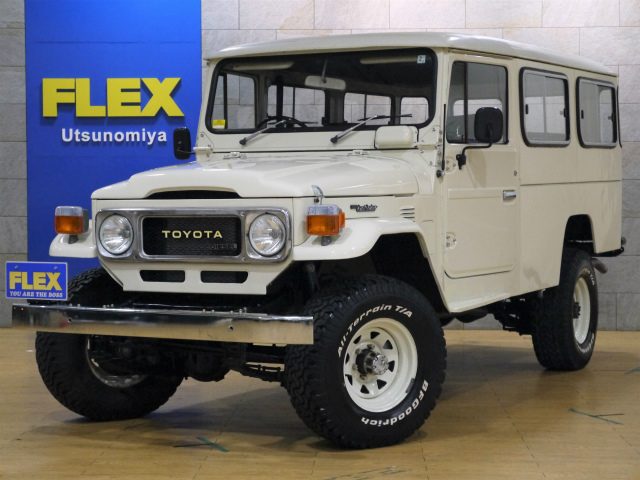
Exterior Features and Classic Design
When you look at the exterior of the FJ40, you’ll notice little change in its appearance throughout its history. For 24 years, Toyota manufactured a 4WD that people recognized at first glance.
The FJ40’s iconic exterior
Iconic is a word used to describe the looks of the FJ40. It resembles the Jeep with its boxy body style and snub nose, and when it comes to going topless, it could make someone double-take. However, it is also available as a hardtop, and the soft top is vinyl instead of canvas for a much more weathertight cover that fits, looks better, and offers wider visibility.
Timeless design elements and rugged aesthetics
As far as design elements go, the heavy-duty steel body, utilitarian lines, and its ability to withstand the harshest conditions give the FJ40 function and a certain beauty for those who appreciate its abilities over cosmetics.
Performance and Off-Road Prowess
Because the FJ40 was designed as a practical vehicle, it was equipped with the power to get owners in and out of adverse conditions, like muddy roads, rocky terrains, and slippery slopes.
Here are the specs of FJ with Gas 6-cylinder:
| Engine | Capacity (L) | Power (hp) | Torque | Used | Notes |
|---|---|---|---|---|---|
| F | 3.9 | 78 kW (106 PS; 105 hp) 93 kW (127 PS; 125 hp) 96 kW (130 PS; 128 hp) | 256 N⋅m (189 lb⋅ft) 283 N⋅m (209 lb⋅ft) 294 N⋅m (217 lb⋅ft) | 1960–1975 | Japan |
| 2F | 4.2 | 99 kW (135 PS; 133 hp)[4] | 284 N⋅m (210 lb⋅ft)[4] | 1975–1984 | Not in Japan |
While the J40 Series was equipped with diesel engines outside of the United States, it was not sold to the general public in the States. However, some diesel-powered J40s made it into the U.S. market via commercial purchase.
The F and 2F engines shared many of the same parts, making them customizable for the mechanically inclined off-roader.
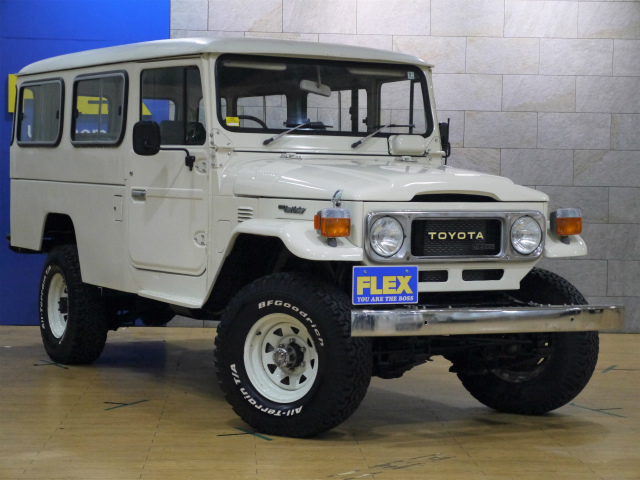
Performance Capabilities
The Land Cruiser’s performance ability is a blend of strength and simplicity. It had a 90-inch wheelbase and 8.3-inch clearance. The track was 55.3 inches in the front and 55.1 inches in the rear, and it had hydraulic 4-wheel drums until 1975, when power front discs replaced them.
Under the Hood
The inline-6 delivers power to a powertrain with ample torque at very low speeds, a critical feature for the overlanding group. The 4WD system is straightforward; its suspension consists of semi-elliptical leaf springs.
All of the FJ40s were equipped with a manual transmission for complete control over performance on different terrains and surfaces. Toyota used a 3-speed between 1960 and 1973 and a 4-speed between 1974 and 1983.
The FJ40 was a stout 3,263 pounds.
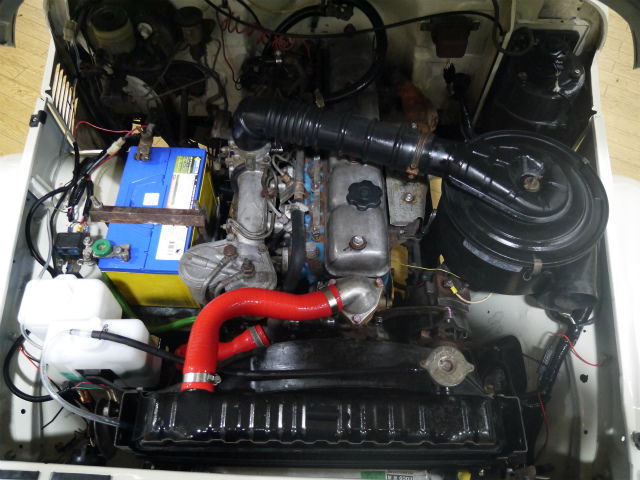
Interior Comfort and Vintage Appeal
While the FJ40 was not focused on a luxury ride or creature comforts, it did have an appeal all its own. For anyone who just wanted straightforward performance and a solid riding 4WD, the FJ40 made up for its sparse interior and bare metal walls.
Nostalgic
The sparse interior may be one of the reasons it has such nostalgic appeal. There are none of the distractions found in today’s cars and trucks. While the FJ40 may be equipped with the bare essentials, overlanders have used the bare interior to create a custom interior that matches their needs rather than what the factory has dictated.
Blending Modern Conveniences
Many aftermarket suppliers and modification specialists like FLEX Automotive have focused on creating and supplying modern conveniences for vehicles like the FJ40. From interior comforts like seats to storage accessories like MOLLE compartments to the latest technology, you can equip your FJ40 to suit your lifestyle.
Driving Experience and Handling
There are plenty of opinions about the driving and handling experiences of the FJ40. While most of the complaints center around the fact that it is underpowered, some owners have had issues with poor handling. In stock formation, the FJ40 can be quite noisy.

On-Road and Off-Road Comparison
While the FJ40 doesn’t excel at being a daily driver – it has poor acceleration, eats fuel, handles poorly, and bounces a lot – those concerns disappear when the tires leave the pavement and hit the dirt. It was built for dirt, rocks, mud, and pastureland, so it’s at home when asked to tackle backroads and trails.
Driving Experience
As noted, the handling is cumbersome on the city streets, but when it comes to navigating over a pile of rocks or powering through a narrow trail, the FJ40 is solidly planted to do the job it was built for.
Historical Significance of the FJ40
The FJ40 has a history born from conflict, so it’s not surprising that it had military and agricultural uses before it became an off-roader’s dream come true.
Brief history and significance of the FJ40 model
The JF40 is derived from a captured Jeep that was reverse-engineered in Japan. After WWII, the allies helped Japan rebuild its economy and industries. When the Korean War broke out in the mid-1950s, the U.S. military asked Toyota to supply them with Jeep-like vehicles built using the Willys specs.
During the post-war years, Toyota expanded on those vehicles, developed the J40 and BJ, and dubbed them “Land Cruisers.” The first Land Cruiser was slightly larger than the “Jeeps” they created for the U.S. but better suited for off-roading.
The FJ40 in the Land Cruiser Story
From these humble beginnings – the 4×4 didn’t even have a transfer case – the FJ40 entered the scene in 1960. It is solidly planted in the history of Land Cruisers as the prototype for which all other Toyota Land Cruisers were developed.
FJ40 Professional Reviews
When Motortrend’s Arron Gold reviewed the FJ40, he found the vehicle’s mechanical feel to be to his liking. He stated that of all the Land Cruisers he had driven, the FJ40 was his favorite.
Jalopnik writer Andrew T. Maness found the FJ40 to be methodical in its approach to acceleration, which means it’s slow to get up to speed. He writes that the FJ40 is a mini tank, but its street performance wasn’t as truck-like as he had thought. He landed solidly as an FJ40 fan.
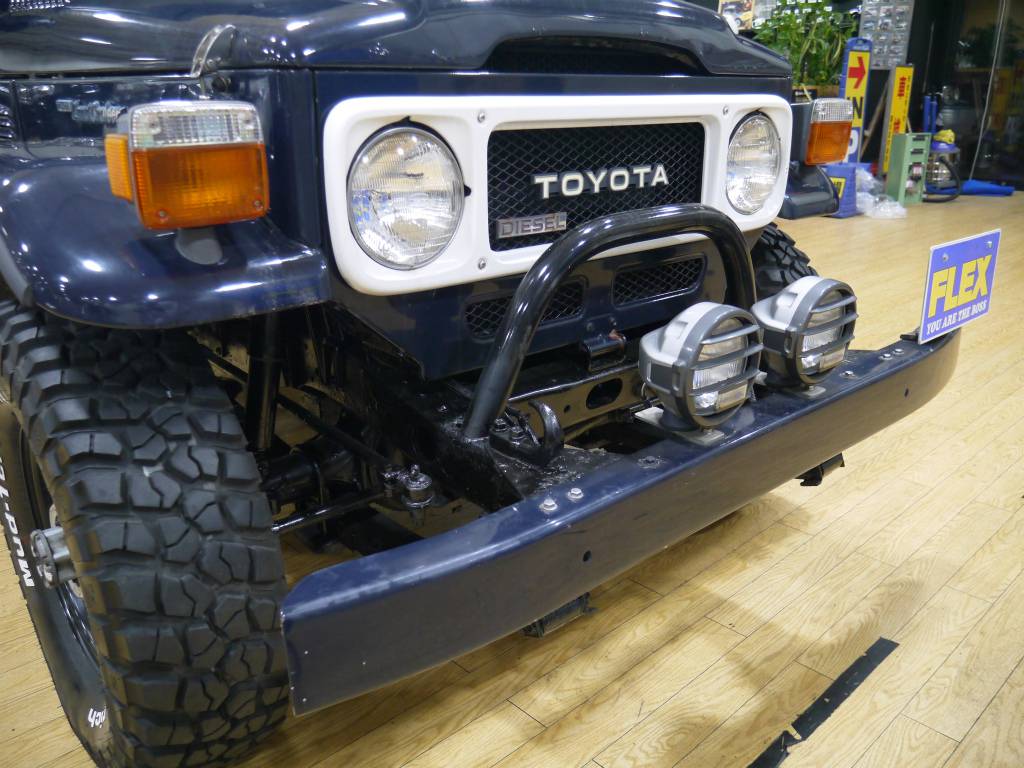
FJ40 User Reviews
Like all vehicles, as long as you do regular maintenance and care for your FJ40, it is built to give you years and miles of service.
As stated by one member of the U.S. military, he was given a used FJ40 to drive while in Saudi Arabia in the 1990s. He said that although the FJ40 was used hard, it was in great condition. On off times, they would take the Land Cruiser out to scale huge boulders, drive through the mud a foot deep, and take it as fast as it would go on highways. He said it only got stuck once, and that was in a bed of silt. If he had to drive through the badlands in Nevada or Australia, he’d choose the FJ40.
Satisfied FJ40 owners
As seen on the forum.expeditionportal.com, one FJ40 owner said he’s had his for 13 years, taking it from stock to a rock-crawling build. He claims it’s a glorified tractor and tough. He said it’s loud, leaks, clunky, rattling, and too small for all of his gear. However, it’s tough, reliable, and the most fun vehicle he’s ever driven. He recommends keeping the 2F or F engine rather than owning a V8.
Comparisons with Contemporary Models
Since the FJ40 is an older vehicle, this comparison is against other Land Cruiser models. While the FJ40 will be lacking in the upgraded interior and other amenities, it will more than make up for it in its off-road capabilities.
Model Comparisons
When comparing the Land Cruiser models, it’s important to note they date back to 1951 with the first Toyota Jeep BJ model. The switch to the name Land Cruiser happened soon after, and from there, the FJ40 joined the family tree.
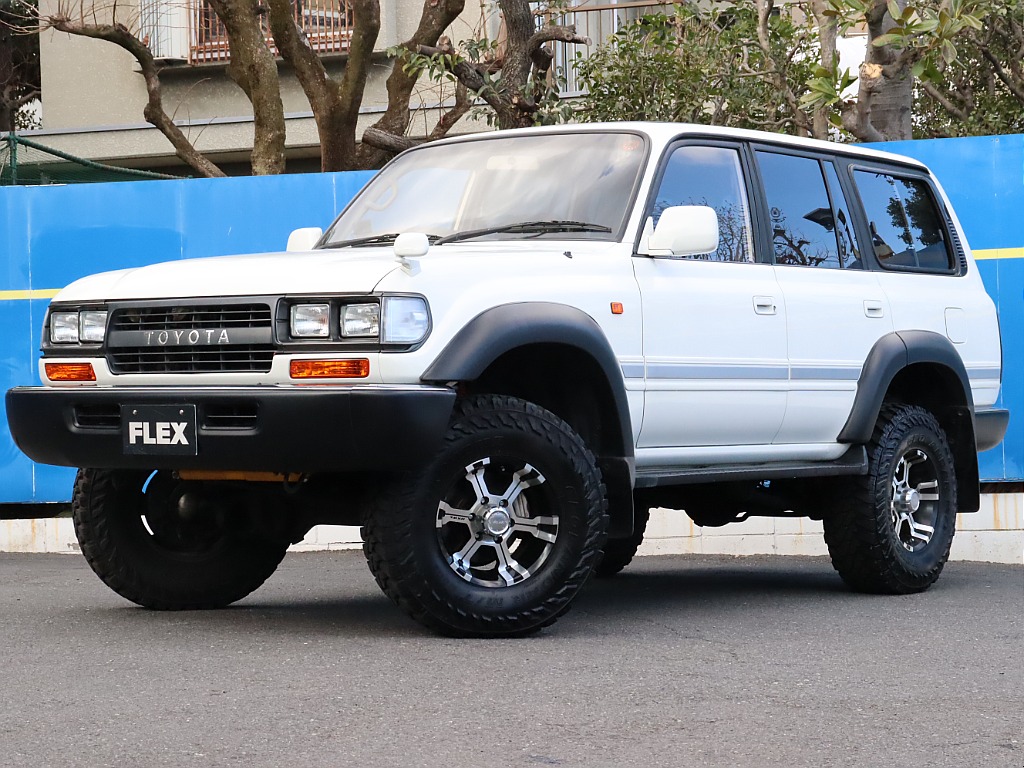
Land Cruiser 80 at FLEX in Japan
The FJ40 can be compared to the 55 Series, the 60 Series, and the 80 Series, as they all have the same purpose: to make traveling over rough terrain easy in a reliable vehicle. As technology advances, many of the changes to the powertrain can be attributed to better electronics, stronger parts, and more advanced tuning. Those items can’t be compared to the FJ40, but the changes can be instrumental in deciding which vehicle you’d prefer.
The FJ40 workhorse is capable of highway travel but not with the same comfort you would expect from the newer 200 Series. On the dirt, the inline-6, powering 135 horses of thrust, was created for hill conquering. It can’t travel too quickly up hills; the 4-speed ratios are too far apart for much speed. The FJ40 has leaf springs and no power equipment but can withstand the worst conditions without straining.
The 55 Series was produced between 1967 and 1980, which put it in direct competition with the 40 Series during the same time frame. It was nearly identical to the FJ40; however, it was the first station wagon body style and offered lots of room for the driver, passengers, and cargo. You can see today’s Land Cruiser in photos of the 55 Series.
The 60 Series also gave everyone lots of interior room, but it was a bit wider than the 55 Series and the 40 Series. It was an upgraded 55 Series with more focus on creature comforts like air conditioning, but it still shared the same motor as the FJ40, making amenities the difference between the two models. Later, 40 Series models received some of these types of upgrades.
The 60 Series was quieter and had better suspension, but it lost a bit of ground clearance in the transition.
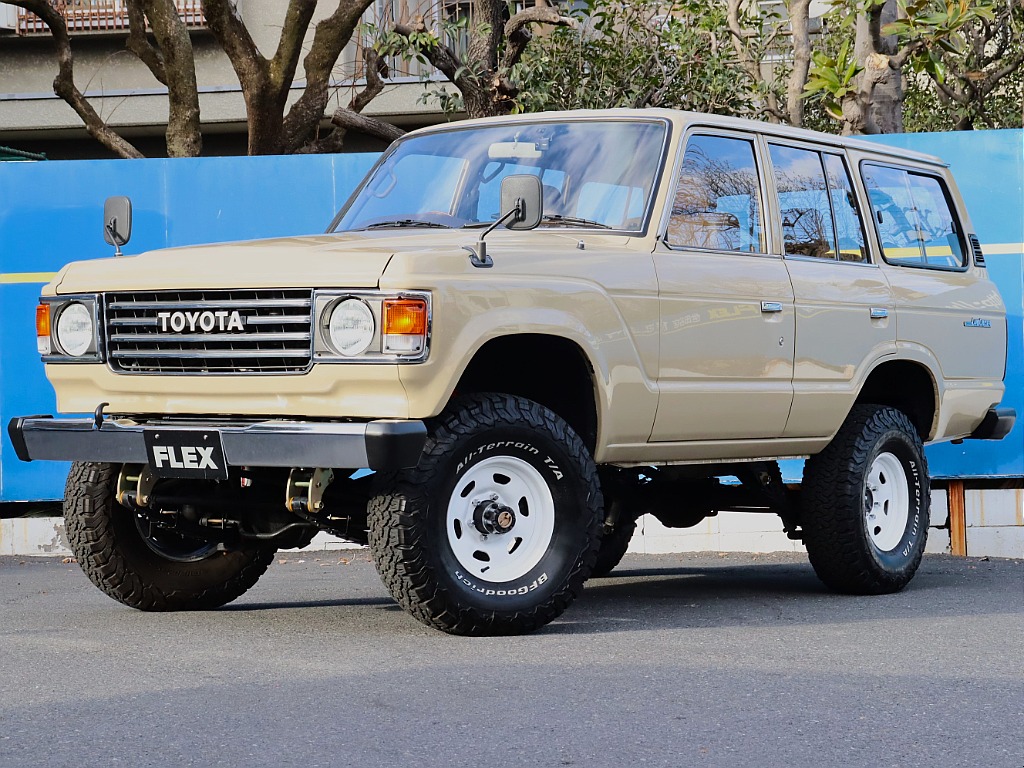
The 80 Series fully embraced the civilian lifestyle with its coil springs, automatic transmission, center differential, and inline-6 with fuel injection and 155 horsepower. It was heavier and longer than the 60 Series.
Toyota gave it a facelift for a more modern look, and the precision handling is quite different from the lack of handling in the FJ40. The 80 Series does tend to perform better off-road than the FJ40.
From the 100 Series forward, the difference between these models and the humble FJ40 is stark. These larger and heavier models may not have lost their 4WD capabilities, but they have lost the simplicity that can be found in the FJ40.
If you’re looking for a tough, uncomplicated SUV with a reliable history, the FJ40 should sit in your driveway.
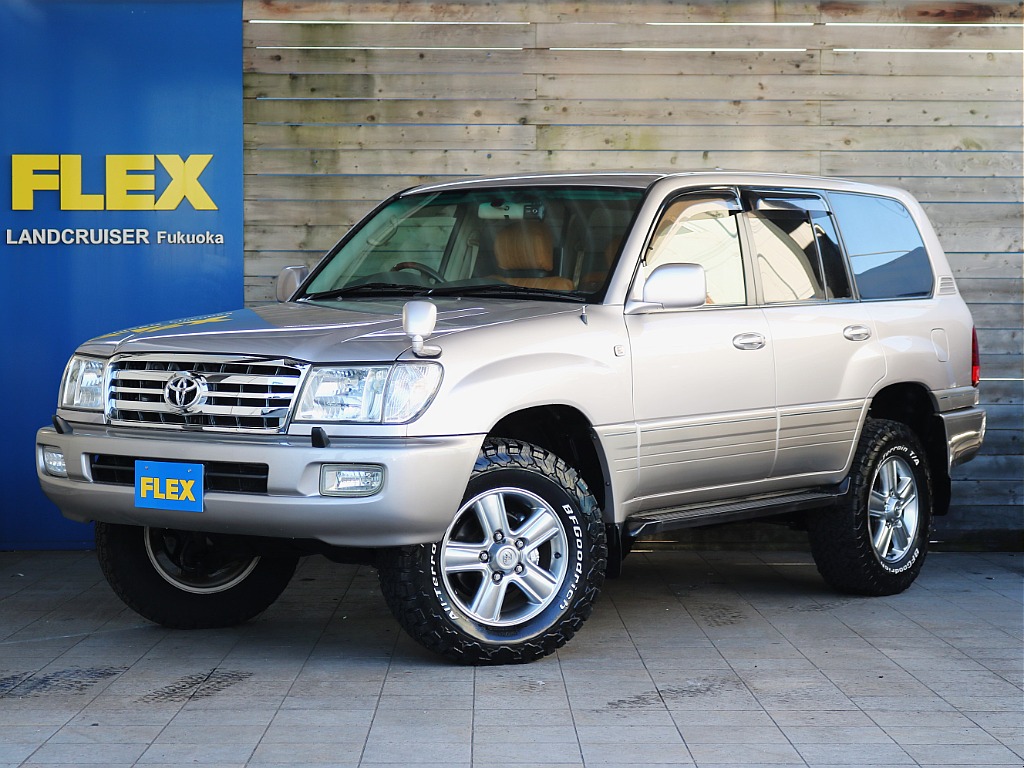
Pricing and Value for Money
Pricing for the FJ40 is all over the place. Like all used vehicles, the price depends on mileage, condition, year, and location. For the most part, whatever you pay for your FJ40 will depend on how badly you want it and how many other modifications have been made to it. No matter what you pay, as long as you get the vehicle you choose, it holds value.
Pricing of the FJ40
The original FJ40 was priced in the $2,000 range in the early 1960s, which was a bit on the low end since the average new car price in 1960 was closer to $2,600. According to Classic.com, the highest price an FJ40 sold for was $270,000.
Value
Remember that the year also matters when determining how much you want to pay for an FJ40. The early years had thicker sheet metal and 4:11 gears coupled with the 1F engine.
For those living in California, 1975 (2F engine) and newer are better years since they can pass smog tests. Previous years find smog tests challenging.
The 1974 model has a standard roll bar; in 1976, Toyota added disc brakes. 1979 saw power steering and air conditioning added to the SUV, and the gearing switched to 3:70. The split transfer case was introduced in 1980, and 1981 through 1983 were the most modern.
Pricing in the 1975 and 1976 models can reach $55,000.
This article provides more information on the 40 Series differences by model year.
Conclusion
It isn’t always easy to determine whether or not you’re getting a good deal on a Land Cruiser or even which model you may want, but there are Land Cruiser experts who can give you information to help you make the right decision, like the staff at FLEX Automotive.
FLEX Advantage
Land Cruiser enthusiasts appreciate working with people knowledgeable in these vehicles’ history, capabilities, and quirks. Since not all Land Cruisers are the same, the staff at FLEX Automotive is well-versed in all aspects of the Land Cruiser. We have been in business since 1967 in Japan, so we know our Toyotas.
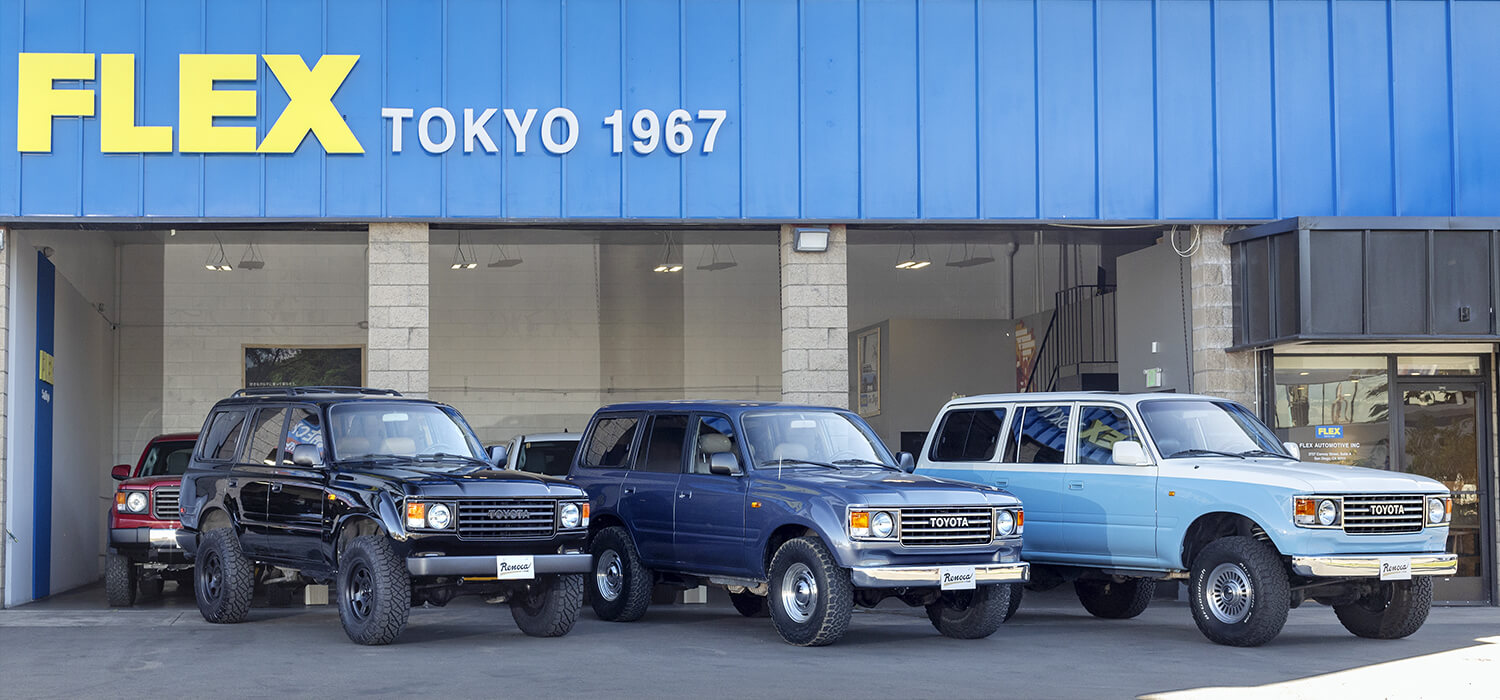
Let FLEX Automotive Handle the Challenges
Finding the right Land Cruiser can be challenging, especially if you’re looking for an older model that’s hard to find in the States. FLEX Automotive is one of Japan’s biggest Land Cruiser dealerships, so we have access to older models you may not be able to find stateside.
Why Choose FLEX Automotive?
We use our experience and connections to find the right vehicle for you. Importing a JDM vehicle requires a lot of paperwork and time. Letting us handle the work means all you need to do is pick out the vehicle you want and wait for them to let you know it arrived. No hassle for you, which gives you plenty of time to do more enjoyable things.
Land Cruiser Showcase
Our lineup includes some of the most iconic Land Cruisers ever produced. In addition to the 60 Series and the 80 Series, you’ll find the 100 Series and trucks like the Tundra and Tacoma.
What if you could have all of the creature comforts you expect in today’s vehicle, yet with the look of older models? Then consider a Renoca car. We will retrofit today’s vehicles to give them a much older appearance based on your custom desires.
You can also update an older model with today’s technology in an older body. Either way, the custom vehicle meets your idea of what the Land Cruiser should look like.
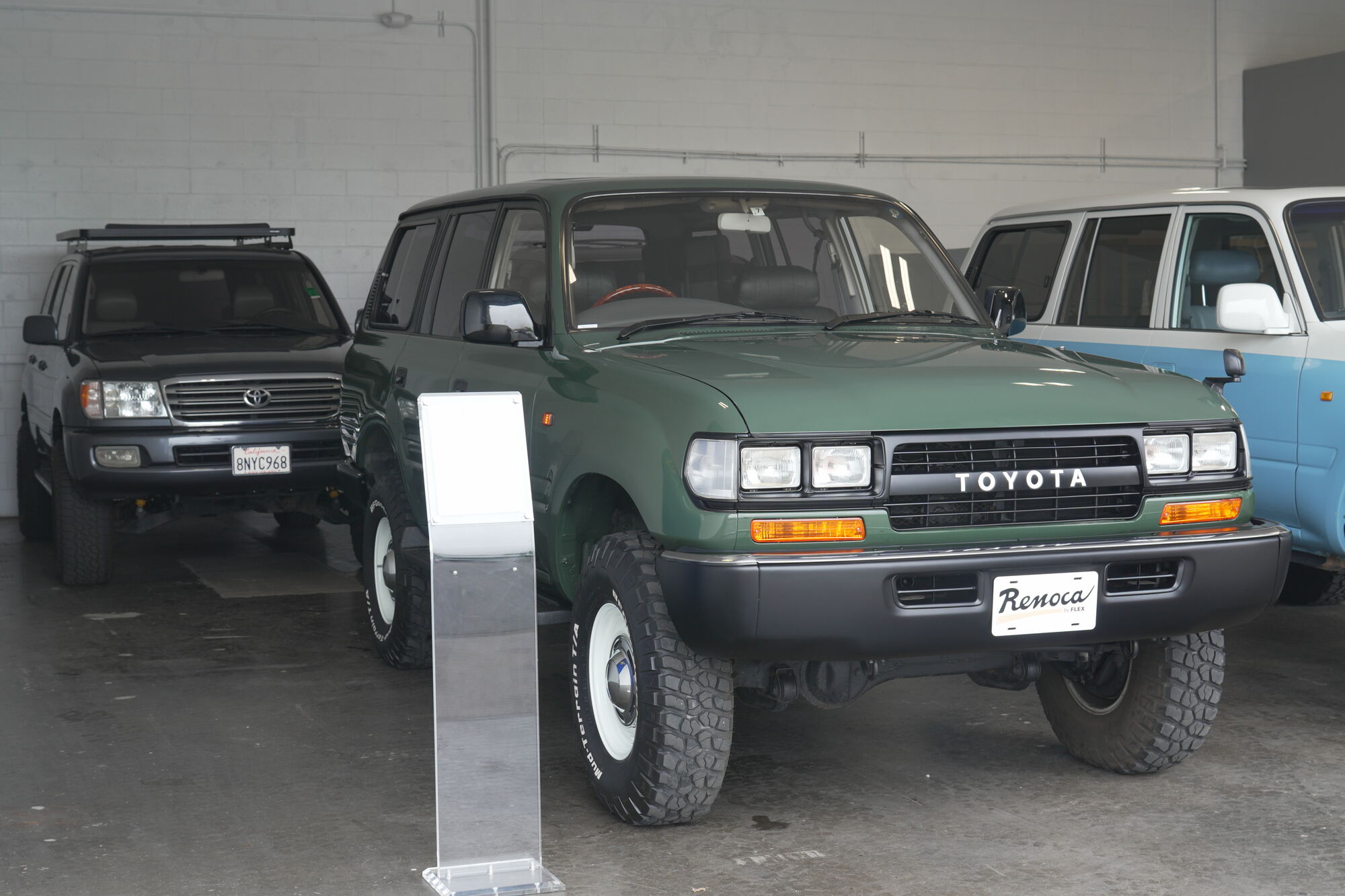
Buying a Land Cruiser at FLEX Automotive
Not only will you save time when you let FLEX Automotive take over the procuring and purchasing of your Land Cruiser, but you now have free time to design how you would like the vehicle to look and what power and performance you want from it. They offer multiple combinations of components and modern equipment that you can select for your new Land Cruiser. You bring your imagination, and they’ll do the rest.
Final Thoughts
The FJ40 has a long history of conquering terrain, working as a military vehicle, transporting troops, giving 4WD enthusiasts thrills of climbing hills, and years and miles of life. Its reputation as a reliable vehicle is the same now as it was then, so if you’re in the market for an FJ40 or just curious, be sure to check out some of the classic FJ40s online.
Key Points
While the FJ40 will never win awards as a comfortable passenger vehicle, it will take you to some of the most remote spots to enjoy the scenery or escape a hectic life. When comparing the 40 Series to its predecessors, it obviously owns the name “workhorse” and has the history to back it up.
Check out FLEX Automotive
In addition to helping you get the Land Cruiser of your dreams, we will ensure that your new Land Cruiser is up to their standards before letting it go home with you. In case you didn’t know, we can work with a Land Cruiser you own or turn your LX450 or LX470 into a retro dream, too.
Contact us for more information.





